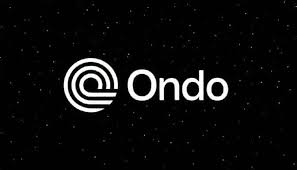When your brand needs visual storytelling, finding the right illustrator can feel like searching for a needle in a haystack. The difference between perfect illustrations often lies in how clearly you communicate your vision to an illustration agency. The process of requesting and receiving exactly what you envision requires a strategic approach.
Professional illustrators are visual problem-solvers who thrive on clear direction. They want to deliver exactly what you need, but can’t read minds. Learning to effectively communicate your visual preferences dramatically increases your chances of receiving illustrations that align perfectly with your brand’s needs.
Step-by-Step Guide to Request a Specific Style of Illustration from an Agency
Following these steps will significantly improve your communication and the likelihood of receiving illustrations that perfectly match your brand’s vision. This structured approach ensures clarity and minimizes misunderstandings throughout the creative process.
-
Define Your Illustration Style Needs
Before contacting any agency, take time to clarify exactly what style you’re seeking. Creating a visual mood board helps crystallize your own understanding of what you want. This preparation prevents the common problem of only recognizing what you want when you see it, a frustrating and expensive approach.
- Collect 5-10 reference images that represent elements of your desired style.
- Note specific aspects you like about each reference (line quality, coloring technique, level of detail)
- Consider practical requirements like usage, reproduction methods, and audience.
- Determine if you need vector or raster illustrations based on how they’ll be used.
Be as specific as possible about the emotional response you want the illustrations to evoke. Are you aiming for nostalgia, excitement, trust, or sophistication? This emotional direction helps illustrators make appropriate stylistic choices even when technical decisions arise during the creation process.
-
Research Agency Portfolios for Style Match
Not all agencies handle all illustration styles. Many clients waste time and money approaching agencies whose strengths don’t align with their needs. If you can’t find examples in their portfolio that somewhat match your vision, they’re probably not the right partner, regardless of how impressive their other work appears.
Research portfolios carefully before reaching out:
- Look for examples similar to your desired style in their existing work
- Check if they’ve worked in your industry before (some styles work better for certain fields)
- Review their most recent projects, as agency styles and personnel evolve
- Note if they show versatility or specialize in a particular aesthetic
Pay special attention to how agencies handle projects in your price range. Some studios showcase primarily high-budget work but deliver different quality levels for smaller projects. Try to find examples that match both your style preferences and budget category for the most accurate preview of what you’ll receive.
-
Create a Comprehensive Creative Brief
Your brief is the roadmap that guides illustrators to your destination. Include:
Project Overview
- Clear description of the project purpose and objectives
- Where and how the illustrations will be used
- Target audience information
- Timeline with key milestones
Style Specifications
- Attached reference images with annotations explaining what you like
- Description of the style using specific terminology
- Examples of what to avoid (sometimes easier than explaining what you want)
- Any mandatory elements that must be included or avoided
Technical Requirements
- Exact dimensions and resolution
- Color palette or specific color requirements
- File format specifications
- Any text integration needs
The most successful custom illustration requests include both visual references and written descriptions. Don’t assume one or the other is sufficient, as they work together to create a complete picture of your expectations.
-
Make Initial Contact with the Agency
Your first communication sets the tone for the entire project:
- Send your brief with a concise email explaining your project
- Request a consultation call to discuss the brief in detail
- Ask specific questions about their experience with similar styles
- Be upfront about budget constraints and timeline needs
During this initial conversation, pay attention to how the agency responds to your brief. Do they ask thoughtful questions? Do they seem to understand your references? Their response indicates how well they’ll translate your vision into reality. If you’re searching for a “sketch artist near me” rather than a remote agency, this initial meeting might happen in person, but the preparation remains equally important.
-
Discuss and Refine the Brief Together
A good illustration agency will help refine your brief before beginning. Pay attention to how the illustrator or agency representative describes your desired style back to you in their own words. This verbal mirroring helps confirm they truly understand what you’re seeking. If their description doesn’t match your vision, take time to realign before proceeding.
- Review your references together and discuss specific elements
- Listen to their professional input about what works and what doesn’t
- Clarify any ambiguous aspects of your request
- Establish agreement on style direction before proceeding
This collaborative refinement often prevents misunderstandings. Be wary of agencies that don’t take time for this step, as it usually indicates they’re not truly invested in understanding your vision.
Consider creating a simplified style test before committing to the full project. Some agencies will produce a small sample illustration (often at reduced cost) to confirm style alignment before investing in a complete series. This approach can save significant time and money on larger projects with untested creative partners.
-
Review Preliminary Sketches
Most illustration projects begin with rough sketches or concepts:
- Provide prompt, specific feedback on initial sketches
- Focus feedback on style elements rather than just content
- Reference your brief when discussing what works or doesn’t
- Approve a direction before moving to the finished illustrations
Understand that preliminary sketches are intentionally rough and focus on composition, general style approach, and key elements rather than details. Many clients mistakenly reject promising directions because the unfinished quality of sketches makes it difficult to envision the final result.
-
Establish Clear Revision Parameters
Before detailed work begins, establish clear revision expectations. Even when working with a local sketch artist, formal revision agreements prevent misunderstandings about project scope and timeline.
- Confirm how many revision rounds are included in the quote
- Understand what constitutes a revision versus a new direction
- Agree on feedback formats (markup tools, written notes, calls)
- Set timeline expectations for each revision round
Create a shared understanding of how substantial each revision round should be. Early revisions should address major style elements, while later rounds typically focus on refinement and details. This progression keeps the project moving forward efficiently.
Document all revision discussions in writing, even when they happen verbally. A quick follow-up email summarizing agreed changes provides a valuable reference point if questions arise later about what was requested or approved during each round.
-
Provide Effective Feedback
The way you communicate feedback significantly impacts results. Good feedback accelerates the refinement process, while vague comments lead to frustration and misinterpretation.
- Be specific rather than general (“Make the lines thicker in the background elements” vs “Make it pop more”)
- Explain why you’re requesting changes, not just what to change
- Prioritize revisions by importance
- Use visual markup whenever possible to indicate exact areas needing adjustment.
- Reference your original brief to keep the project on track
Avoid using subjective or emotional language alone when providing feedback. Phrases like “I don’t like it” or “It feels wrong” don’t give illustrators actionable direction. Always pair subjective reactions with specific suggestions for improvement.
-
Consolidate Feedback from Stakeholders
When multiple people need input on illustrations:
- Collect all feedback before sending to the agency
- Resolve conflicting opinions internally first
- Present a unified direction rather than contradictory requests
- Designate one person as the primary contact for the illustrator
Consider implementing a structured feedback process when multiple stakeholders are involved. Having each person focus on different aspects (brand alignment, technical accuracy, aesthetic appeal) can prevent conflicting feedback and ensure a comprehensive review.
Be transparent with your artist when significant internal disagreements exist about style direction. Experienced agencies can often provide objective perspectives or alternative approaches that satisfy competing priorities within your organization.
-
Final Approval and File Delivery
Many custom illustration projects hit snags at the final stage because of misunderstandings about file formats or usage rights. Clarify these details before considering the project complete. Before concluding the project:
- Confirm all technical specifications are met
- Check illustrations in the contexts where they’ll be used
- Ensure you receive all file formats needed for various applications
- Get usage rights in writing as part of the final delivery
Request both print-ready and web-optimized versions of final illustrations if they’ll be used across multiple channels. Different applications have different requirements, and having appropriate files for each use saves time and preserves quality.
Common Pitfalls to Avoid
When requesting specific illustration styles, watch out for these common mistakes:
- Being too vague: “Make it modern” means different things to different people
- Providing contradictory references: Mixing incompatible styles causes confusion
- Changing direction mid-project: Major style changes after approval often require starting over
- Micromanaging technique: Focus on results rather than dictating exactly how the illustrator should work
- Ignoring technical constraints: Some styles don’t reproduce well in certain formats or sizes
These pitfalls often derail projects and lead to mutual frustration between clients and illustrators.
Bottom Line
Requesting a specific illustration style from an agency requires clear communication, thorough preparation, and collaborative refinement. The most successful illustration projects come from partnerships where both client and illustrator contribute their expertise.
At Craven Fashion Studio, we’ve refined the art of translating client visions into compelling visuals that communicate not just the design of garments, but their spirit and movement.
Unlike general illustration agencies that handle everything from children’s books to technical diagrams, our focused expertise means we speak your language from the first conversation. We analyze your brand positioning, audience psychology, and competitive visual landscape to recommend custom illustration approaches that will truly differentiate your fashion story.
Contact our team for a customized portfolio presentation aligned with your specific aesthetic direction!


